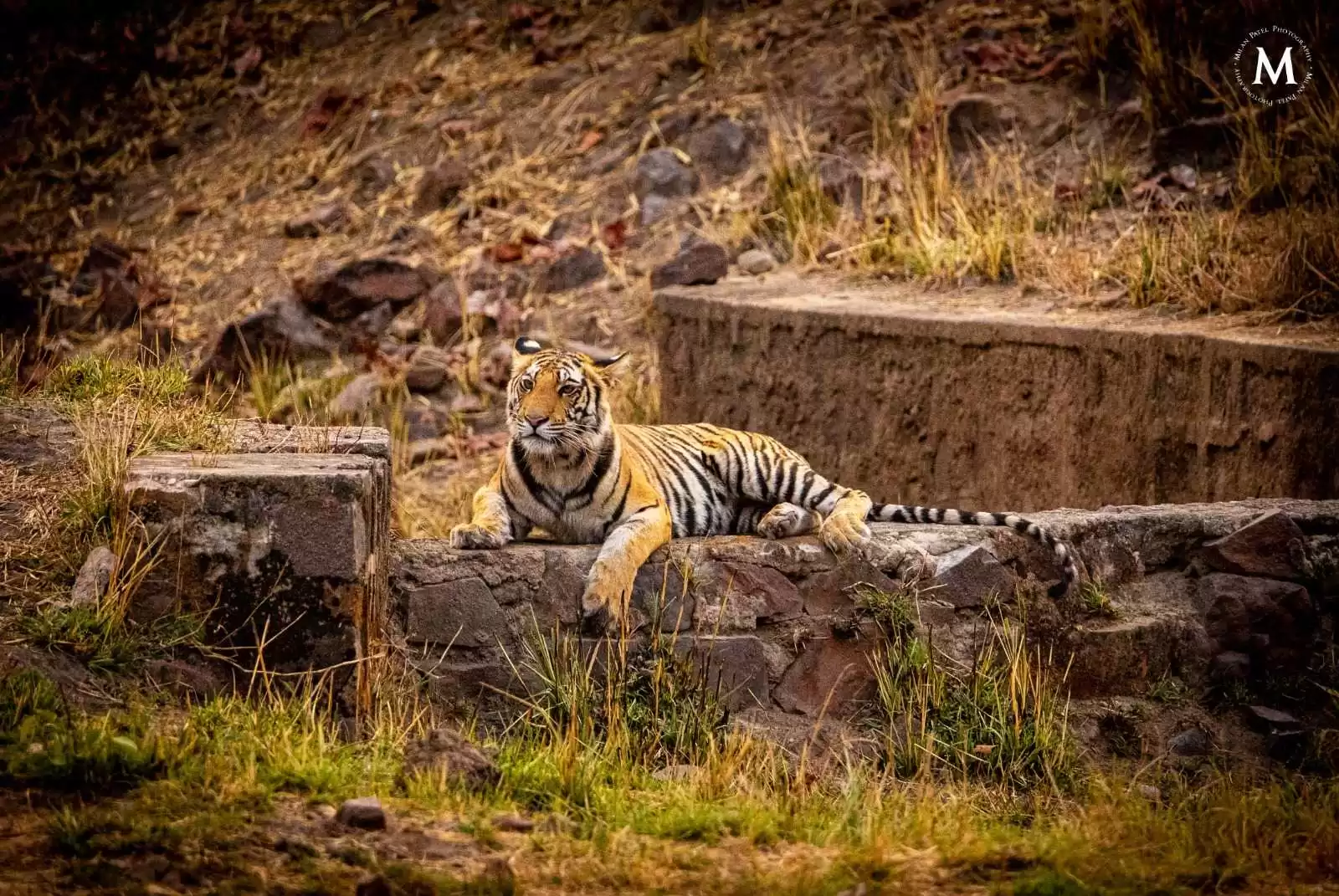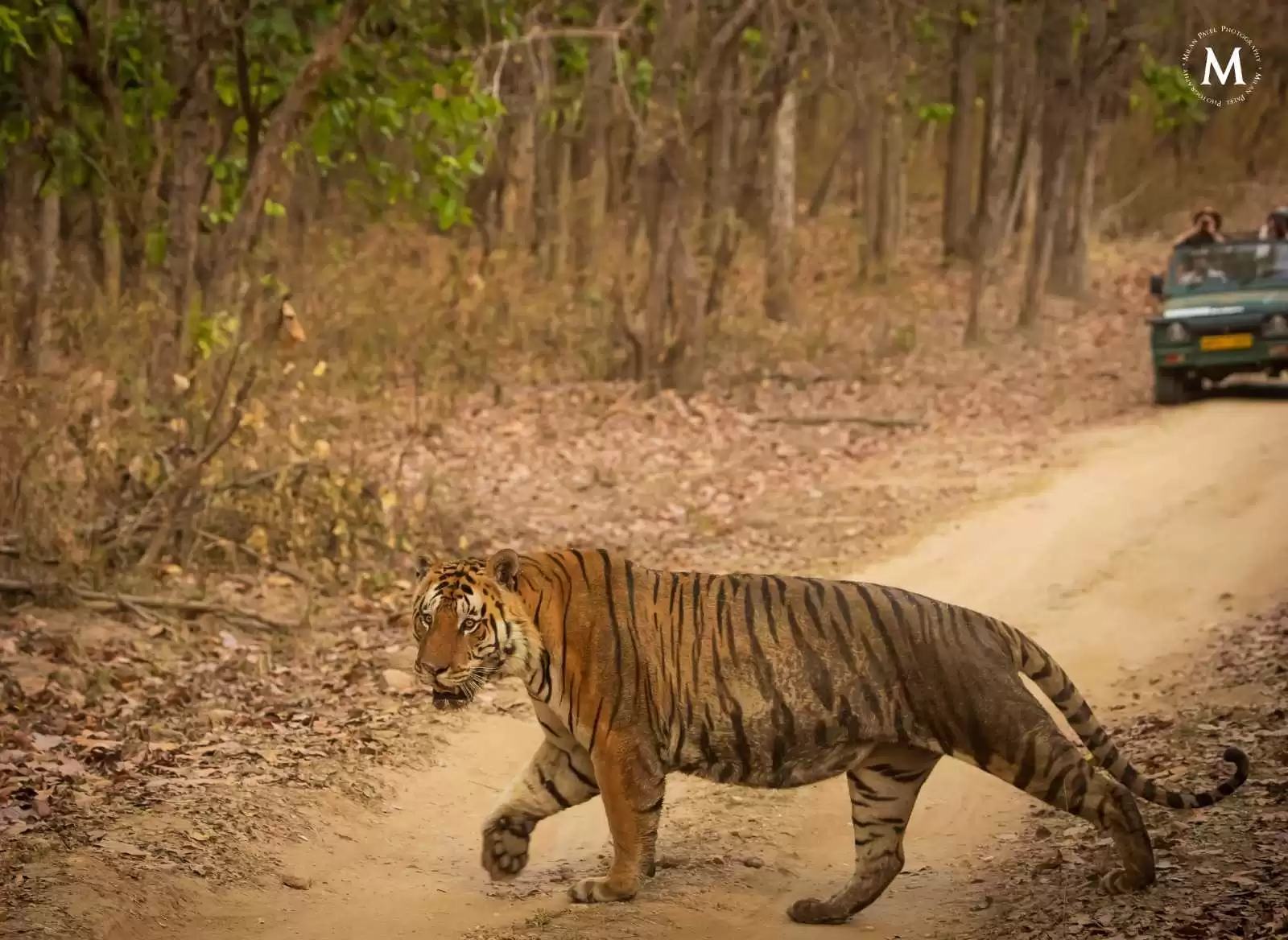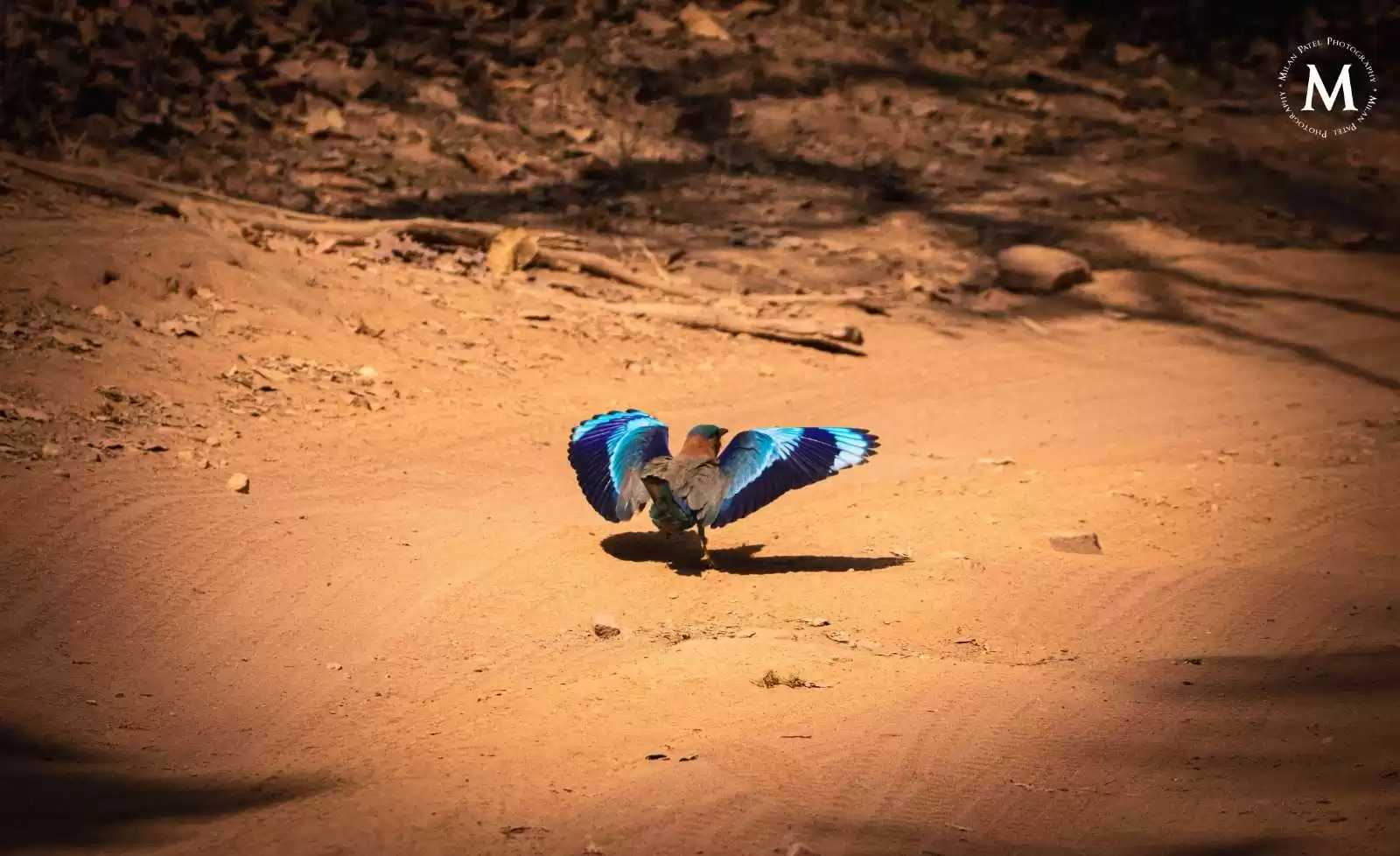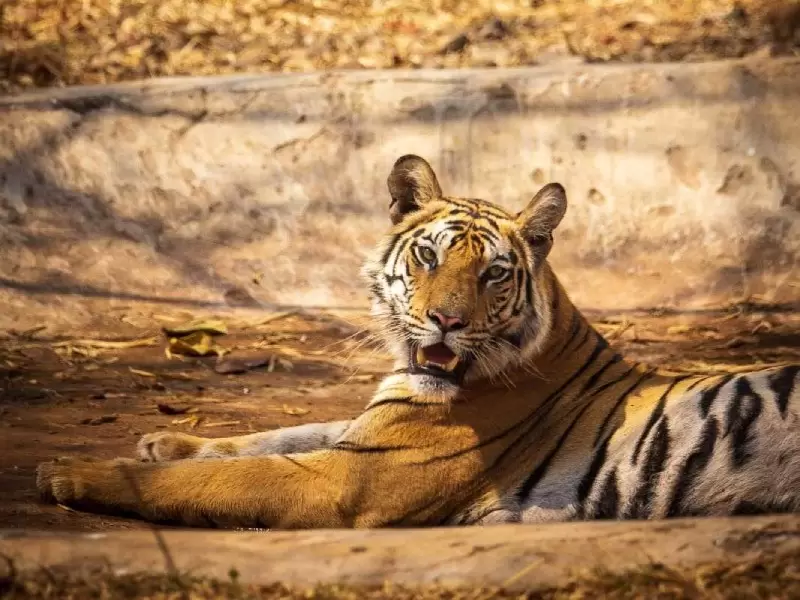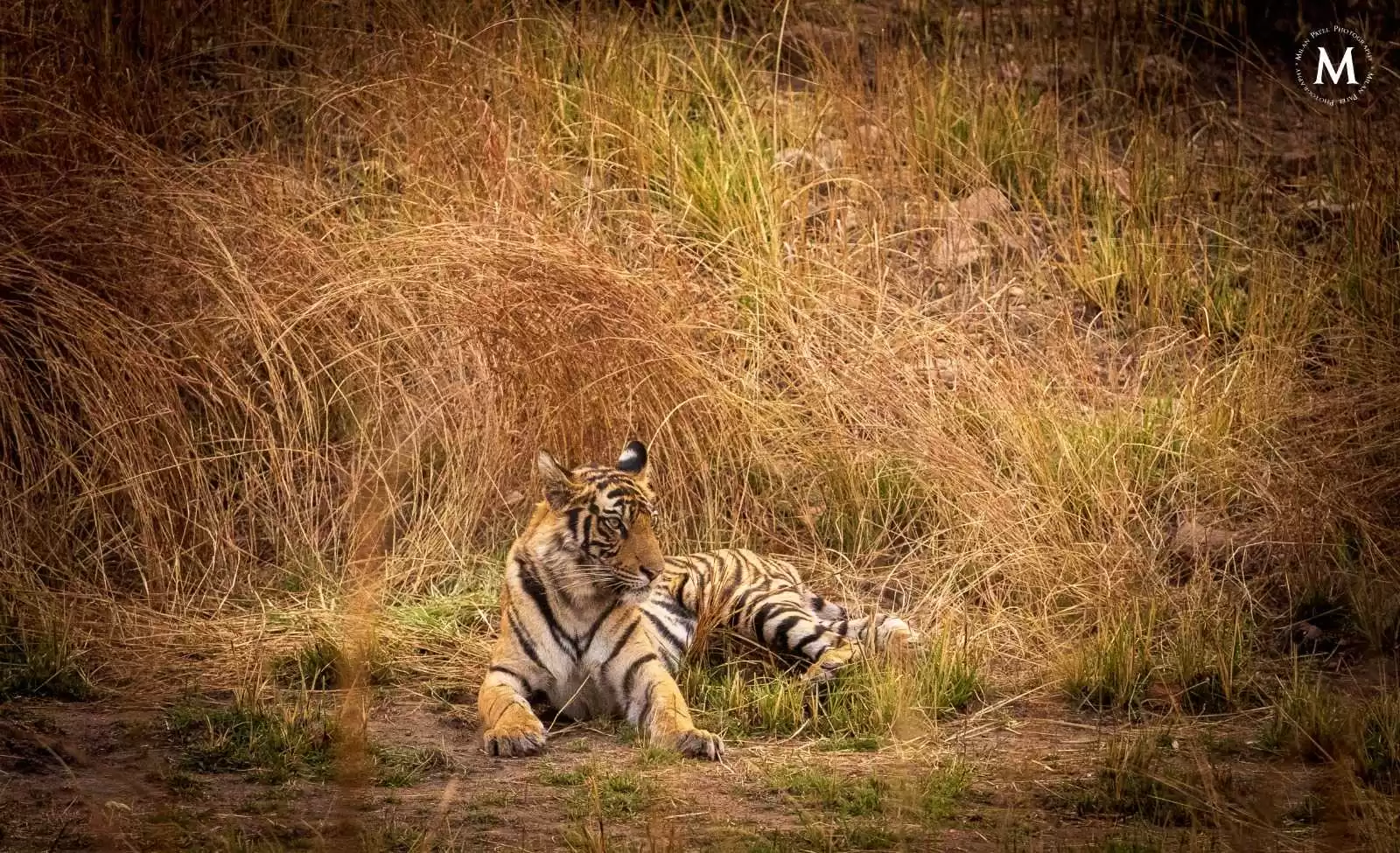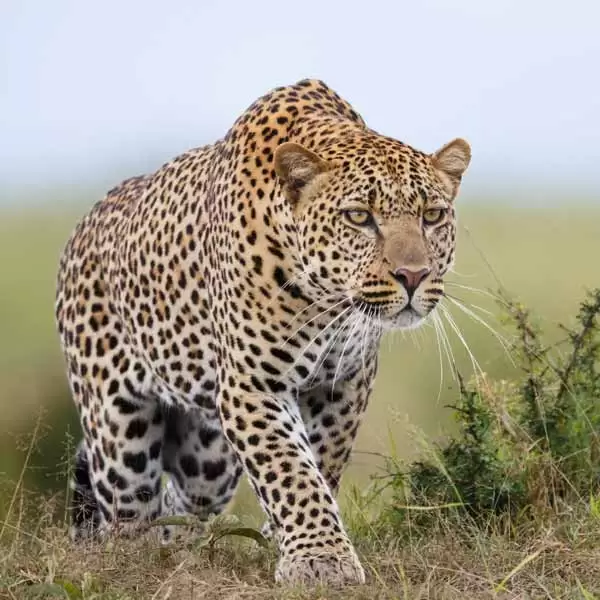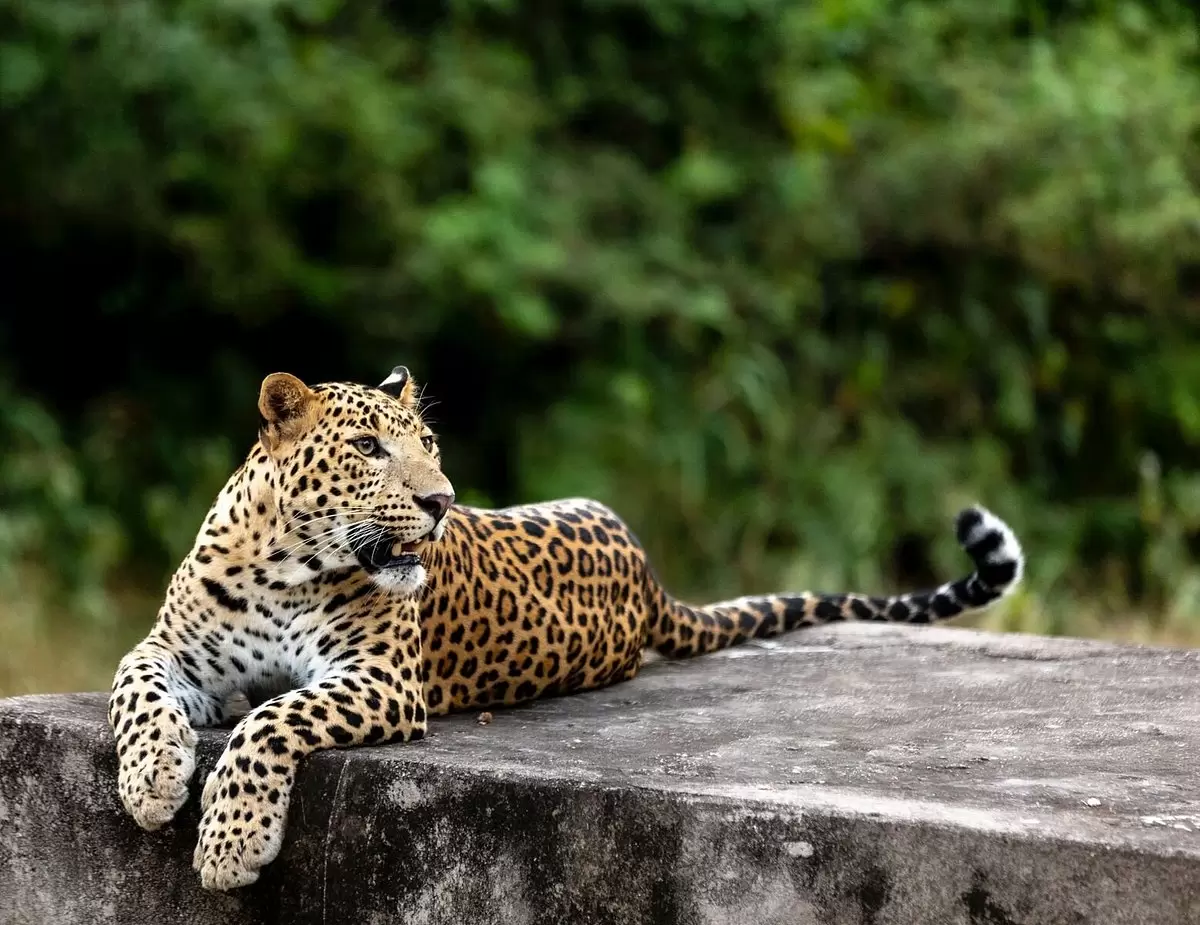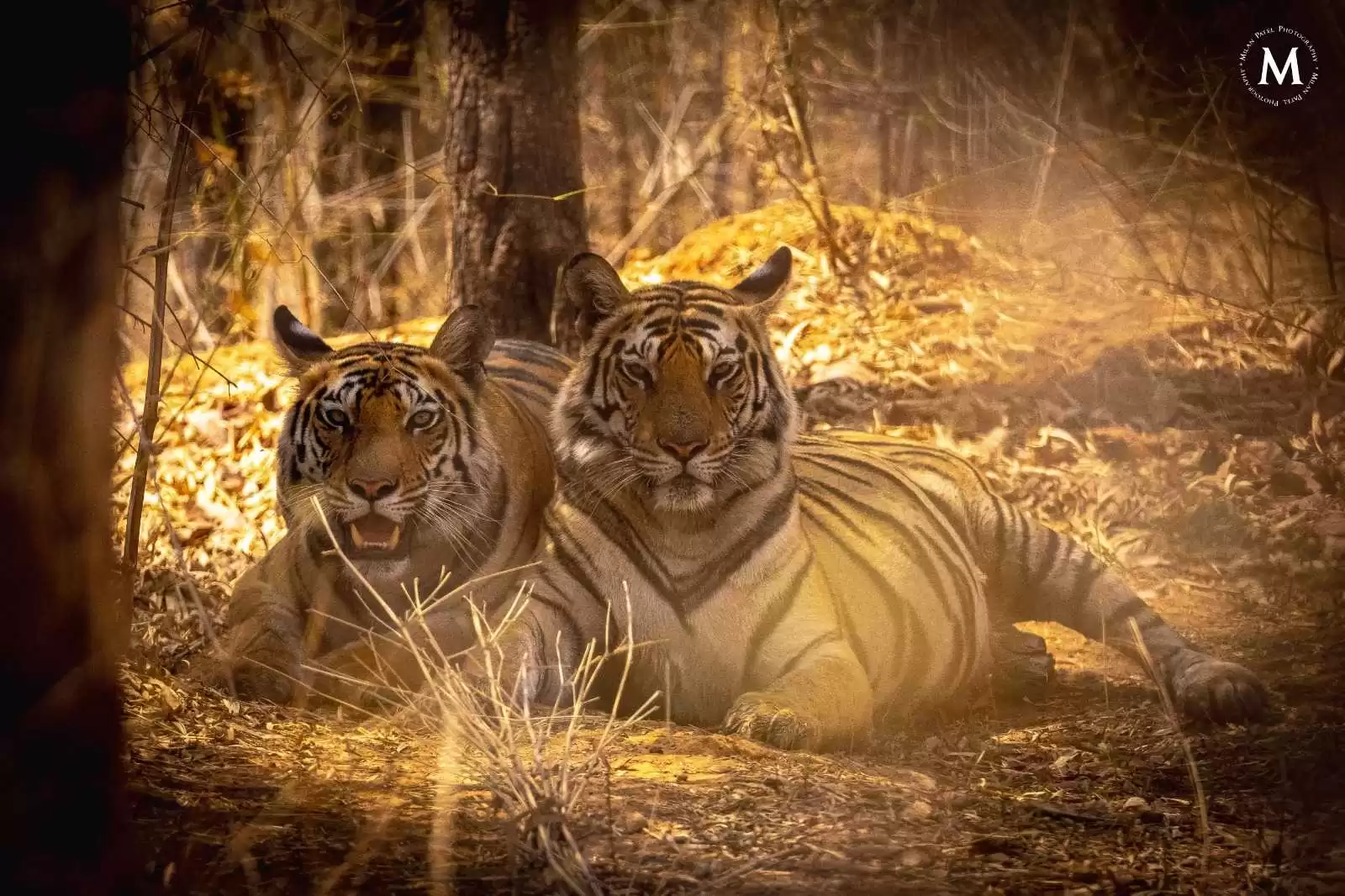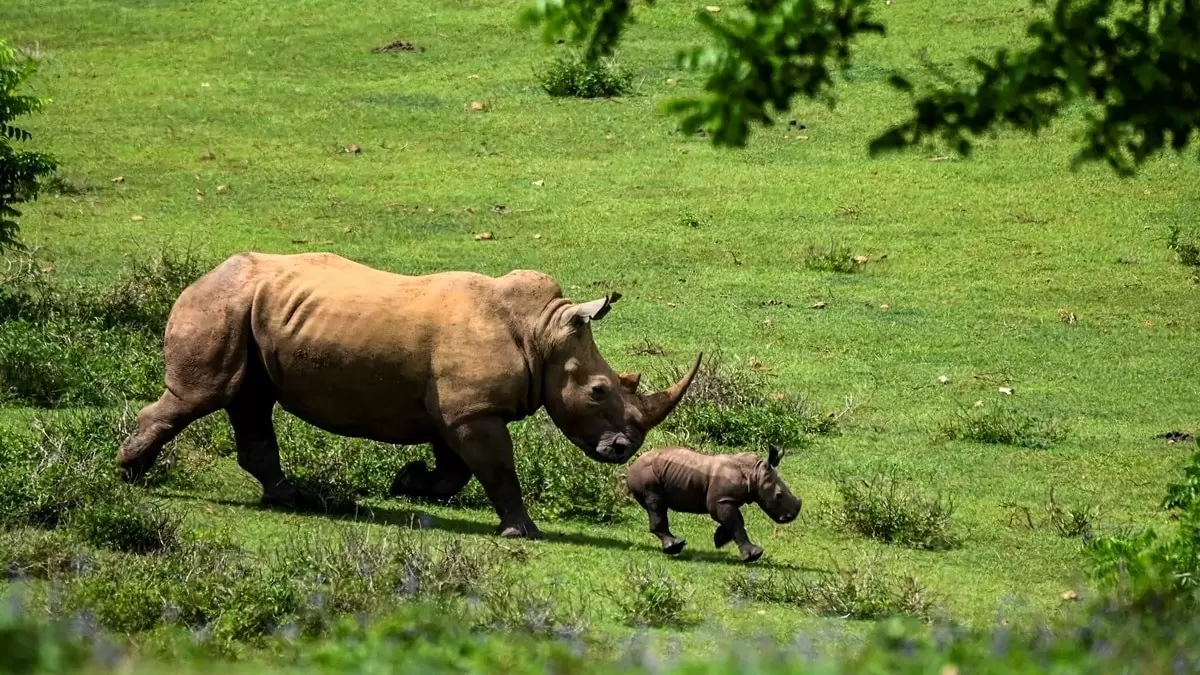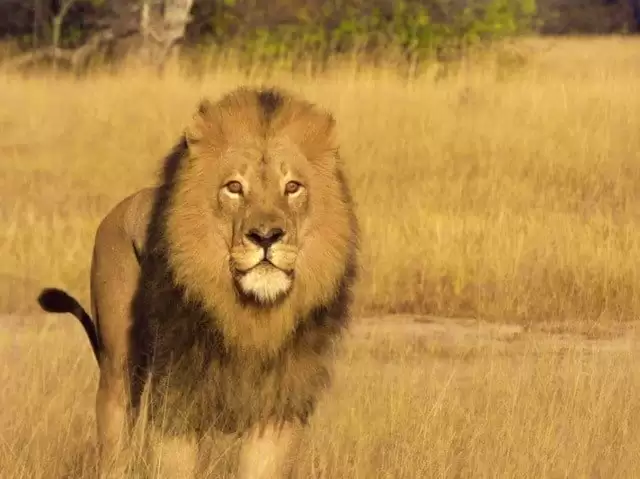Bandhavgarh National Park in Madhya Pradesh. India is home to a thriving population of Bengal tigers. The park known for its Tropical forests and diverse wildlife, is one of the best places in the world to see these magnificent animals in their natural habitat. The name Bandhanvgarh which also signifies ‘Brother’ and ‘Fort’ can also be traced all the way back to the origins of Ramayana as Bandhanvgarh was the fort originally gifted to Laxman by Lord Ram who is the elder brother of Ram and thus also caters to the meaning ‘Brother’. Bandhavgarh offers a unique opportunity for visitors to witness the Bengal tigers in action, thanks to its extensive network of jeep and elephant safaris. These guided tours allow visitors to get up close and personal with the tigers, providing an unforgettable experience. The park’s diverse ecosystem makes it an ideal place for both nature enthusiasts and wildlife photographers. It is one of the Park in India with the highest density of Tigers, which helps visitors to get the best tiger sighting experience. Conservation efforts in Bandhavgarh have been successful in protecting the Bengal tiger population, which has seen a steady increase in recent years. It is a must visit for those seeking to encounter some of the best of Bengal’s prides.
Kanha National Park located in the central Indian state of Madhya Pradesh, is one of the best places in the world to see Bengal tigers in their natural habitat. The park is known for its lush green jungle, Grasslands, rolling hills, and abundant wildlife, making it a popular destination for nature lovers and wildlife Enthusiastic. The national park is famous for late tiger called ‘Munna’. whose tales are often narrated by the locals as one of the terrifying wild tigers that existed. It is also home to the Tigress ‘DJ’ and she has been an attractive subject for many well-known wild life photographers. Many people also say that Kanha National park was the first to spark the trend of promoting tigers and the park’s staff works tirelessly to monitor and protect the tigers, ensuring their continued survival for generations to come. Kanha National Park is a must-visit destination for anyone interested in seeing Bengal tigers in their natural habitat. With its rich wildlife, diverse ecosystems, and dedicated conservation efforts, Kanha national park is one of the largest forest in central India. Kanha offers a unique and unforgettable experience for visitors of all ages.
Pench National Park located in the central Indian state of Madhya Pradesh, is one of the best places in India to see panthers / leopards in their natural habitat. The park, which spans over 758 square kilometers has a diverse green scape with beautiful and natural landscapes. Panthers , also known as Black Panthers, are native to the region and can be found in the dense forests of Pench. These big cats, known for their distinctive black fur, are known for their agility, strength, and stealth. The park shelters ‘Kali’ a familiar resident panther known for her ferocious look. Pench is also the only national park that is shared by two different states MP and Maharashtra as it falls on the tip of their respective borders. Another unique fact about this wildlife reserve is that it is also home to ‘Collar Wali’ a notorious tigress who gave birth to 29 cubs and all of them survived. In addition to panthers and tigers, Pench is also home to a rich variety of other wildlife, including, leopards, deer, monkeys, and birds and the park’s diverse ecosystem makes it an ideal place for both nature enthusiasts and wildlife photographers. Also, Conservation efforts in Pench have been successful in protecting the panther and the tiger population. Pench National Park is a must-visit destination for anyone interested in seeing panthers in their natural habitat. With its rich wildlife, diverse ecosystems, and dedicated conservation efforts, Pench offers a thundering experience of some of the astonishing wildlife in India. It’s an actual Mogali Land.
Panna National Park, located in the central Indian state of Madhya Pradesh, is home to a thriving population of Bengal tigers. The park, which spans over 542 square kilometers, is known for its lush and diverse wildlife, making it a popular destination for those seeking intimate encounters with nature. In the late 90’s the tiger population was near to extinction in Panna due to Poaching and Hunting and in 2009 it was a place without Tigers. However after that it has become an emblem of tiger conservation with multiple breeding projects and conservation strategies, Panna has become an epicenter for Tiger rehabilitation and has witnessed a steep rise in the tiger population. In Just 10 Years of such conservation exercises Tiger populations rise to 50 in Panna National Park. Many wildlife photographers flock to Panna owning to its spectacular natural scenarios and dense jungles. It is an experience worthy of a life time.
Ranthambore National Park located in the northern Indian state of Rajasthan, is one of the best places in India to see Bengal tigers in their natural habitat. The park, which spans over 1,334 square kilometers, is known for its strong jungle scape, with dense vegetation. The Tigress ‘Machli’ who is known for her encounter with an alligator which she killed resides within the confines of this sanctuary and has attracted many wildlife photographers and nature lovers to observe this tigress in action. She is the most popular tigress in the world. Because of such tigers the park got famous and its get promoted across the world. Ranthambore is a must visit if you want to click some splendid clicks of tigers in their natural habitat and experience such encounters of Big cats. The whole conservation area has been revamped to instill the thrill you seek.
Sariska National Park, located in the northern Indian state of Rajasthan, is a haven for wildlife enthusiasts and nature lovers. Also known as a baby of Ranthambore, the park spans over 866 square kilometers and has a very strong concentration of tigers. The dense forests and the stunning landscape are only few of the factors that redefine this place as TIGER LAND and is home to some of the more ferocious and active Indian Tigers. This is an ideal place for seasoned photographers and wildlife specialists who wish to add more overt the top experiences for Tiger spotting.
Jawai, located in the western Indian state of Rajasthan, is a unique and little-known destination for those seeking to see Leopards in their natural habitat. Unlike other national parks in India, Jawai is known for its close proximity of Leopards to human settlements, making it a unique destination for wildlife enthusiasts. The park’s diverse ecosystem makes it an ideal place for both nature enthusiasts and wildlife photographers. Jawai is also known for its close relationship between the local communities and the wildlife, with the local villagers serving as protectors of the Leopards. This unique relationship has helped to conserve Leopards population, ensuring their continued survival for generations to come. Jawai is ideal for those seeking to witness some of the best wild life in India.
Jhalana Wildlife Sanctuary, located in the Northern Part of Indian, state of Rajasthan, is a hidden gem for those seeking to witness the beauty and diversity of Indian wildlife. The sanctuary, which spans over 24 square kilometers, is known for its lush jungles, rolling hills, and diverse wildlife, making it a popular destination for nature enthusiasts and wildlife photographers. One of the most unique features of Jhalana is its population of leopards. These majestic cats can often be seen lounging in the trees or hunting in the jungles, providing an once-in-a-lifetime opportunity for visitors to witness them in their natural habitat. Visitors to Jhalana have the opportunity to witness the leopards in action through jeep and trekking safaris and there is a one hundred percent chance of spotting these wild beasts which will definitely get you pumped with excitement. These guided tours allow visitors to get up close and personal with the leopards, providing an unforgettable experience.
Jim Corbett National Park, located in Uttarakhand, India, is one of the oldest and most famous national parks in the country. Established in 1936, it was India’s first national park and was named after the famous hunter-turned-conservationist Mr. Jim Corbett. It was the first national park to undergo Tiger Conservation and since then has become one of the largest tiger sanctuaries in India. The park covers an area of 520 square kilometers and is home to a variety of wildlife, including tigers, leopards, elephants, and more than 600 species of birds. The park is also known for its scenic beauty, with the Ramganga River flowing through the park and lush green forests. This is the ideal environment for new wildlife enthusiasts and wildlife photographers to capture some of the most surreal tiger experiences on camera. The park is largely famous for its multiple tiger sightings and the safari will give you the thrill of being surrounded by some of the nature’s most iconic beauties.
Tadoba Andhari Tiger Reserve, located in the state of Maharashtra, India, is one of the premier wildlife destinations in the country. Established in 1955, the reserve covers an area of over 1600 square kilometers and is home to a variety of wildlife, including tigers, leopards, sloth bears, and over 200 species of birds. Visitors to the park can go on jeep safaris or walking tours to view the wildlife and birdlife. These tours are led by experienced naturalists who can guide visitors on the best places to see wildlife and help them understand the park’s ecology and history. The park is known for its lush green forests and scenic beauty, with the Tadoba Lake at its center. Visitors can take a scenic boat ride on the lake or go on a nature walk to explore the park’s rich biodiversity.
Bandipur National Park located in the state of Karnataka, India, is one of the most popular wildlife destinations in the country. Established in 1974, the park covers an area of over 874 square kilometers and is home to a rich diversity of wildlife, including tigers, elephants, gaurs, and over 300 species of birds. The national park is a fine example of the Tiger Conservation project and has an estimated tiger population of around 400 tigers. The Reserve is endowed with rich floral and faunal diversity and is recognized as one of the Mega Biodiversity Areas in the country. The Tiger and the Elephants are the flagship and umbrella species for the conservation of all the Biota that this ecosystem represents. The viable population of these two species is indicative of a healthy Ecosystem.
Located in the state of Assam, India, Kaziranga National Park is one of the most renowned wildlife destinations in the country. Established in 1908, the park covers an area of over 430 square kilometers and is home to a rich diversity of wildlife, including one-horned rhinoceroses, elephants, tigers, and over 450 species of birds. On the recommendation of Mary Curzon, the park is located in the edge of the Eastern Himalayan biodiversity hotspots – Golaghat and Nagaon district. In the year 1985, the park was declared as a World Heritage Site by UNESCO. The world’s only one horn rhino dominates the park and has been an active attraction for my wildlife enthusiasts. The national park is also well-known for its lush Greenland forests that are home to a multitude of species. The best time to visit the park is from November to April, when the chances of spotting wildlife are higher, and the weather is pleasant. The vast expanse of tall elephant grass, marshland, and dense tropical moist broadleaf forests undoubtedly makes the park look beautiful but it’s the presence of Brahmaputra River, which makes it look enigmatic.
Sasan Gir, located in the state of Gujarat, India, is one of the country’s most renowned wildlife destinations. Established in 1965, the park covers an area of over 1412 square kilometers and is home to a rich diversity of wildlife, including lions, leopards, hyenas, and over 300 species of birds and it is also home to the Asiatic Lion “The King”. The Asiatic lions of Sasan Gir are known for their distinctive appearance, with a shaggy mane and shorter stature compared to African lions. In India you will find Asiatic Lions in Sasan Gir only. They roam the park’s dense forests and grasslands in search of prey, such as deer and wild boar. They are a rare and precious treasure of the Indian wilds. With their distinctive appearance and powerful presence, they captivate visitors from all over the world and provide a unique and unforgettable experience.

